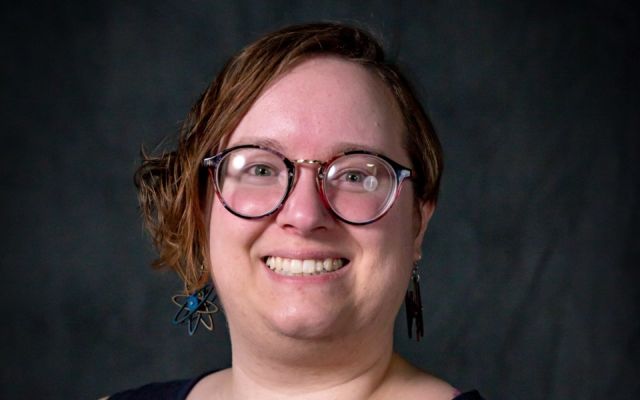
— Marie CurieNothing in life is to be feared. It is only to be understood. Now is the time to understand more, so that we may fear less.
Faculty Information
Additional Faculty Information for Mardi M. Billman
Education
B.A. with Distinction in Chemistry, College of St. Benedict
Ph.D. in Chemistry, Colorado State University
Memberships
American Chemical Society
Sigma Zeta
Publications
Force Field Model of Periodic Trends in Biomolecular Halogen Bonds.
In The Journal of Physical Chemistry B, 119, (2015): 9140-9149.
Intra- and Inter-Molecular Interactions between Non-Covalently Bonded Species.
(to be published in 2020)
Talks
Faculty After Hours: Growing Up a Gamer
Courses Taught
CHM 101: Great Principles of Chemistry
CHM 201: General Chemistry I
CHM 202: General Chemistry II
CHM 406: Inorganic Chemistry
CHM 475: Junior Research
CSP 259: Ethics in Video Gaming
Research Interests
Computational Modeling of Intermolecular Forces
Chemical Education at the Undergraduate Level
Inorganic Synthesis and Spectroscopy
Biography
Dr. Mardi Billman grew up in the town of Brainerd, Minnesota. The town was not much larger than Hillsdale, though it was on the Mississippi River and accumulated more snow. It was in high school when Dr. Billman fell in love with chemistry, specifically electrons and the atomic orbitals.
She earned her bachelor of arts with distinction in chemistry from the College of St. Benedict in St. Joseph, Minnesota. It was there that Dr. Billman realized her passion for science education and decided that she would be a college professor when she grew up.
She majored in chemistry and minored in math, and her research focus was on the structure and mechanics of copper oxidases.
Dr. Billman then earned her Ph.D. in chemistry from Colorado State University in Fort Collins, Colorado, where she worked with Dr. Anthony Rappe on force field development to model the halogen bonding phenomenon. Her love of chemistry started with electronic structure, and electronic structure became her specialty.
These are the experiences that Dr. Billman brings to Hillsdale, where she teaches general chemistry and inorganic chemistry. She is also expanding her research interests and organizing programs in computational modeling, chemical education, and/or inorganic synthesis. When not at work, she can often be found drinking coffee, reading a good book, painting, or playing video games.